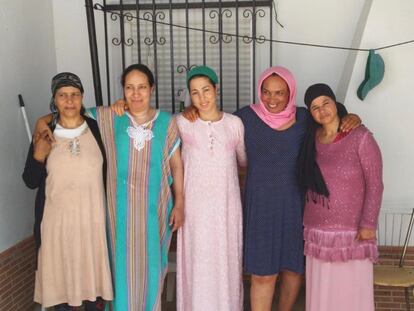The map of Spain’s coronavirus outbreaks: 40% are linked to family gatherings
Since the beginning of the deescalation process, at least 105 infection clusters have been detected in the country, according to data collated by EL PAÍS
New coronavirus outbreaks have been reported in almost every region in Spain, with large spikes in infections in the provinces of Huesca (369 cases), Lleida (around 800 cases in several areas), Lugo (165) and Málaga (109). All of Spain’s 17 regions – except for Asturias– have recorded new coronavirus hotspots over the last few weeks. Although Asturias was one of the first regions to detect a coronavirus outbreak, with cases reported at a senior residence in Gijón at the end of May, this situation is now under control and no new outbreaks have been reported.
Since the beginning of the coronavirus deescalation process on May 11, regional authorities have reported at least 95 new outbreaks. Of this figure, 36 (i.e. 40%) originated at family gatherings, such as the wedding in Tudela, the celebration for San Juan in Castellón and a friends’ lunch in Alcanar. And most remain active, meaning there has been transmission within the past two weeks.
In the map above, EL PAÍS has provided a snapshot of coronavirus outbreaks in Spain, based on the public information available from regional health authorities, local media and official sources such as regional press offices. Last week, Health Minister Salvador Illa said in an interview with Catalunya Radio that 118 new outbreaks had been detected since the government began easing the lockdown rules, which were among strictest in the world.
But the Health Ministry is not responsible for reporting the number of coronavirus outbreaks or how many cases are involved in each one. Regional authorities are in charge of providing transparent data on the current coronavirus situation, but very few are sharing figures on the number of outbreaks, and almost none are doing so in a systematic and ongoing fashion. This means it has been impossible to locate the 118 outbreaks mentioned by Illa.
The Health Ministry defines an outbreak as “any group of three or more confirmed or probable cases with an active infection in which an epidemiological link has been established.” An outbreak is no longer considered active if 14 days have passed since the last transmission. Just as some regional authorities try to avoid the work outbreak and talk of clusters or groups of cases, they also maintain that these situations are “under control.” But this does not necessarily mean that they are inactive.
The source of many outbreaks is defined as “family” because transmission happened in the home, but it could have been spread anywhere
Many outbreaks occur within family settings, but it is difficult to know where the first person contracted the virus, explains Jésus Molina Cabrillana, a member of the Spanish Association of Preventive Medicine, Public Health and Hygiene (Sempsph). “We almost never know the origin of the index case,” he explains. What is known is that contagion does not just happen in the family. Infections are also spread in the workplace and outside the home, at social gatherings for example. The source of many outbreaks is defined as “family” because transmission happened in the home, but it could have been spread anywhere. Molina Cabrillana lists some examples: “Offices, closed spaces, spending many hours together, material in the office is shared, measures are relaxed...”
Ildefonso Hernández, the spokesperson for the Spanish Association of Public Health and Health Administration (Sespas), maintains that many family outbreaks come in fact from the workplace. For example, when epidemiologists followed the trail of a family transmission in Rafelbunyol in Valencia they traced it back to the workforce. What’s important, says Hernández, is knowing where both the outbreak and each new detected case are coming from. But this requires a huge level of resources that Spain does not have right now, adds the epidemiologist. “There is not the capacity to do an exhaustive analysis,” he says. Contact tracing tends to be limited to the contacts of the person infected, but a more in-depth probe, which includes, for example, investigating all the places the person has been in the seven or 10 days before noticing symptoms, is more complicated.
The public health experts are working on the ground, but Hernández says that “there is a need for professionals in the rearguard analyzing data.” He gives the example of an outbreak that was recently detected in Menorca. It was a family from Murcia who had been on the island for a week. “That outbreak obviously had to be linked with something there,” he says, and required “detailed analysis. The Health Ministry’s Coordination Center for Health Alerts (CCAES) centralizes all of the data about all of the outbreaks that are detected, but, as far as is known, it does not carry out this analysis. The Carlos III Health Institute usually produces reports based on cases communicated to the National Network of Epidemiological Monitoring (and of the surveys that each patient fills out) and offers demographic, clinical and epidemiological characteristics of thousands of cases, but is no longer publishing them. The last one is dated May 29.
English version by Melissa Kitson.
